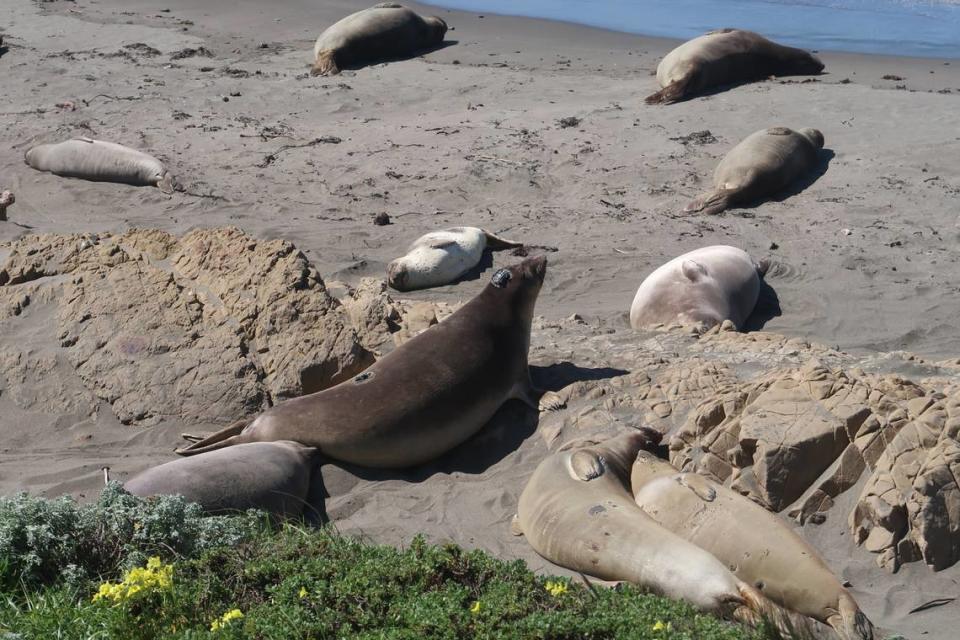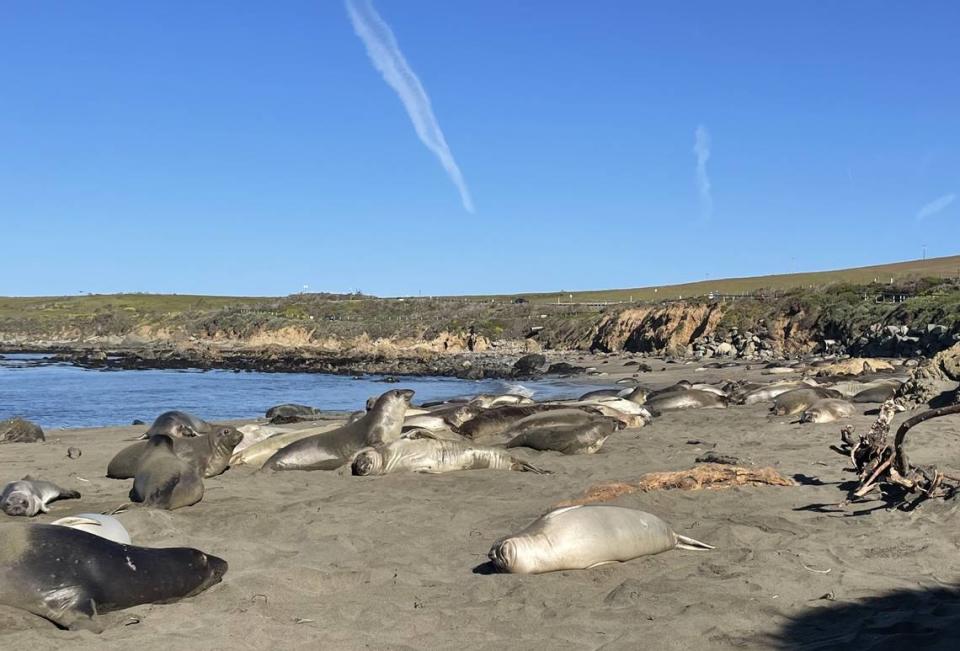Gigi the elephant seal spent 342 days on ocean migration. What can she teach scientists?
Every day brings surprises at the Piedras Blancas elephant seal viewpoint north of San Simeon.
April brought an especially exciting visitor to the beach in northern San Luis Obispo County.
On April 5, Friends of the Elephant Seal docents spotted a female elephant seal with two tracking devices. One was attached to her head, while the other was on her back.
Such electronic tracking devices are used by the research team at UC Santa Cruz. FES docents notified the researchers right away.
Salma Abdel- Raheem, a doctoral student in the Beltran Lab in the university’s Department of Ecology and Evolutionary Biology, recognized the seal as one of her research subjects.
The team worked with a colleague, Dan Costa, to get the California State Parks and National Oceanic and Atmospheric Administration permits required to go on to the beach and retrieve the devices.
On Easter Sunday, April 9, the researchers carefully shooed away the other seals before giving the female seal a sedative injection.
Then they cut off the zip ties and electrical splicing tape holding the devices to a mesh footprint glued to her fur. They also collected blood and tissue samples.

UC Santa Cruz researchers track elephant seal
The research team attached the tracking devices to the seal, which the docents have dubbed Gigi, on May 2, 2022, at Año Nuevo State Park in San Mateo County.
The seal was two years old then, approaching adulthood from adolescence.
Gigi hauled out at Point Reyes a few months later, on Sept. 19, and stayed until Oct. 24, a typical juvenile haul-out.
“We tried to retrieve her tags during this period, but she was only accessible by boat and weather conditions were not favorable,” Abdel-Raheem said.
The seal left the beach on her next migration, and stayed out of tracking range until she came ashore at Piedras Blancas.
That 342-day trip is the longest of any of the juvenile seals the team has tracked so far, nearly double the average trip of 184 days.
“We’re really excited to see what she’s been up to in her year-long adventure!” Abdel- Raheem said.

Successful foraging
Researchers know that Gigi fed well during her recent migration.
She doubled her mass from 170 kilograms (about 375 pounds) in May 2022 to 344 kilograms (about 760 pounds) on April 9, when the team recovered her trackers. That’s more than any other seal the team has studied.
Gigi is beautiful and sleek, without any scars or defects. She’s a real rock star of a seal.
What does data tell scientists about migration?
Somewhere along the way, Gigi lost the VHF transmitter that allowed the team to find her on the beach.
However, the tracking devices attached to her fur continued collecting data – monitoring salinity, depth, light, temperature and other factors. Accelerometers measured Gigi’s orientation ofin the water column as well as her speed and acceleration.
“We can put these data together to help us formulate an idea of what the seal is doing while out
at sea,” Abdel-Raheem said. “We can infer the number of prey capture attempts, the body condition via buoyancy, how much time the animal spends traveling, resting, or foraging, how the animal responds to changes in its environment.
“These data are critical in informing our understanding of the ecology and physiology of this species throughout juvenile development.”
Along with Abdel-Raheem, the tag recovery team included her two lab-mates, Zea Premo and Milagros Rivera, and their adviser, Roxanne Beltran.
Premo is studying the development of diving physiology in juvenile seals by using the blood and tissue samples that researchers collect.
Rivera is interested in the genetic diversity of northern elephant seals and uses the DNA samples to inform her research.
The mesh footprint that held the tracking devices will fall off as Gigi molts on the beach, now blending in among her sisters.
Thanks, Gigi, and farewell.

